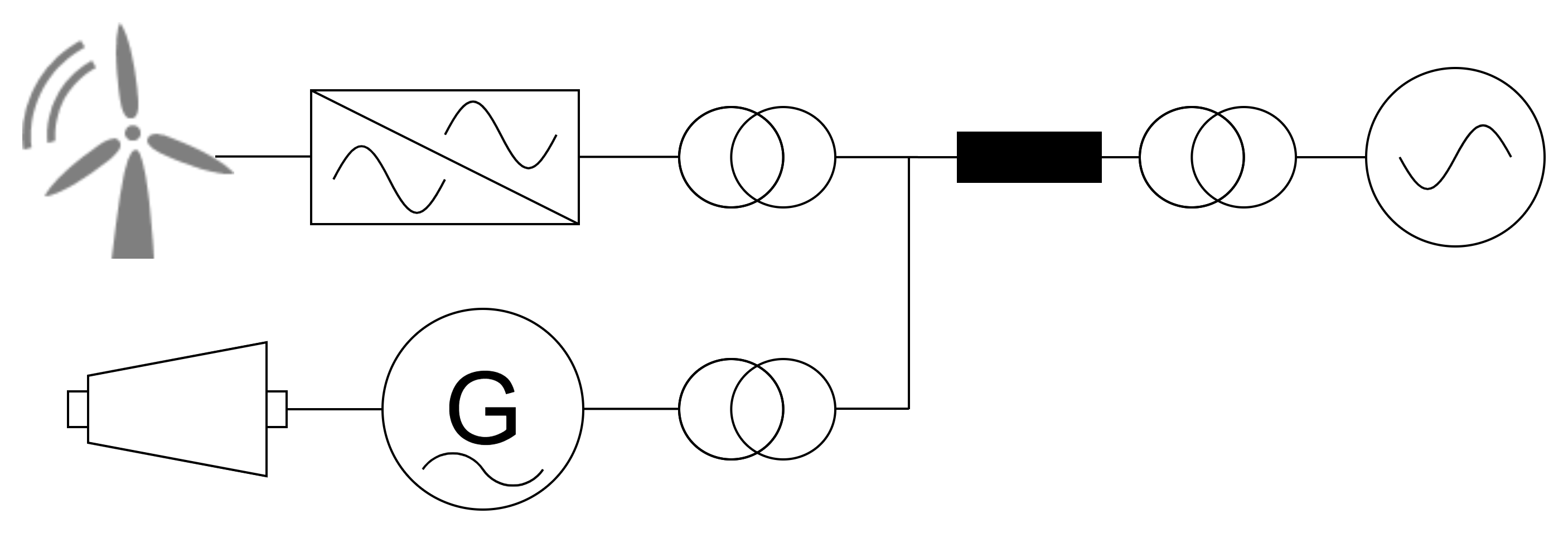Subsynchronous Oscillation Screening
In Prof. Prabha Kundur‘s book’Power System Stability and Control’, the discussion on the Subsynchronous Oscillations (SSO) begins from torsional oscillations and modeling the turbine-generator shaft system. Then the phenomenon of Subsynchronous Resonance (SSR) is defined as sustained or negatively damped subsynchronous oscillations in a series capacitor-compensated transmission network caused by two distinctive mechanisms: (a) self-excitation due to induction generator effect and (b) interactions with torsional oscillations.
It is not clear what are the exact definitions of these two terms, SSR and SSO. There are also terms called Subsynchronous Control Interaction (SSCI) and Subsynchronous Torsional Interaction (SSTI). It is important to know what these terms are talking about.
I found the following papers give very good explanations for these similar terms.
- Terms, Definitions and Symbols for Subsynchronous Oscillations
- Reader’s Guide to Subsynchronous Resonance
- Sub-Synchronous Control Interactions between Type 3 Wind Turbines and Series Compensated AC Transmission Systems
- Simplified Model to Study the Induction Generator Effect of the Subsynchronous Resonance Phenomenon
- Second Benchmark Model for Computer Simulation of Subsynchronous Resonance
SSR
SSR is the oscillation of electrical and mechanical variables associated with turbine-generators when coupled to a series capacitor-compensated transmission system where the oscillatory energy interchange is lightly damped, undamped, or even negatively damped and growing.
SSR is a combined or separated effect of torsional interaction, induction generator effect, and torque amplification.

SSO/SSTI
SSO is defined as device-dependent interaction. Such interaction has been observed on HVDC converters, power system stabilizers and FACTS devices located near a turbine generator. Some papers also define this oscillation as Subsynchronous Torsional Interaction (SSTI).

SSCI
Existing papers define subsynchronous Control Interaction (SSCI) as interactions that can occur between power electronics converters and a series capacitor. It does not involve a mechanical interaction with any turbine generator. However, it could also happen between a utility-scale PV inverter (PVI) and a transmission system without a series capacitor due to the small-signal negative resistance caused by the Phase-Locked Loop (PLL). Utility Battery Energy Storage System (BESS) Power Conditing System (PCS) converters are now grid-forming controlled. A scenario where only PV inverters operate without any BESS is currently unstable but may become viable with further advancements in PV inverter technology, such as incorporating grid-forming capabilities, to provide sufficient sub-synchronous oscillation damping.

Negative Resistance
Grid-tied Inverter features a small-signal negative resistance in its output impedance due to PLL when modeled in the Synchronous Reference Frame (SRF). Synchronization Instability could happen between the inverter and other converters in the same system.
What is very interesting to me is that in the SSR analysis, the Induction Generator Effect (IGE) also induces a negative resistance. When an SSR happens, it can be observed that the synchronous generator embeds a “parasitic” induction generator. If the stator “sees” a rotor turning at a frequency above the synchronous one, then the slip is negative and the equivalent circuit exhibits a negative resistance. At high degrees of compensation, this apparent negative resistance may exceed the network resistance, effectively resulting in an RLC circuit with negative resistance. Such a condition will result in self-excitation causing electrical oscillations of intolerable levels.
SSCI in Power System Impact Study
Subsynchronous Test: Perform a frequency scan sweep to measure the subsynchronous impedance as seen from the inverter’s perspective over the range of 5 to 55 Hz. This is documented in ERCOT’s Dynamic Working Group Procedure Manual. Electranix’s SSCI Detailed Evaluation Using PSCAD is also a good material to read. Other methods can be found here.